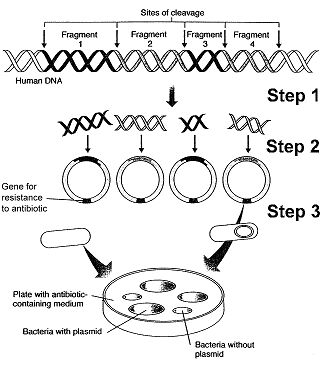Hardy-Weinberg pointed out that the original proportions of the genotypes in a population would remain constant from generation to generation if certain assumptions are met. Which one of the following is not a Hardy-Weinberg condition?
A. No gene flow occurs.
B. Random mating occurs.
C. No polymorphic loci exist in the population.
D. No selection occurs.
E. The population is very large.
C. No polymorphic loci exist in the population.
You might also like to view...
Refer to Figure 15-1. The use of antibiotic medium at the end of this process:

a. selects against plasmids containing human DNA fragments.
b. selects for plasmids containing particular DNA fragments.
c. selects for bacteria containing plasmids.
d. selects for bacteria lacking plasmids.
e. prevents contamination of the medium
A simplified form of the Fick diffusion equation is J = KA (C1-C2) where J is the rate of diffusion, K is a constant, A is the area across which diffusion is occurring, and C1 and C2 are the concentrations of the substance on either side of the membrane. Given this, which of the following would INCREASE the rate of diffusion of a solute?
A. A decrease in D B. A decrease in A C. An equivalent decrease in both C1 and C2 D. An equivalent increase in both C1 and C2 E. An increase in C1 while holding C2 constant
Biofilms provide pathogens with an adhesion mechanism and aid in resistance to antimicrobial agents
Indicate whether the statement is true or false
Activation energy
A) is the minimum amount of energy needed to get a reaction started. B) is the minimum amount of energy needed to get a reaction started and is due to the necessity of collisions between reactants which have enough energy and with the reactants properly oriented. C) is due to the necessity of collisions between reactants which have enough energy and with the reactants properly oriented. D) is the minimum amount of energy needed to get a reaction started and is due to the necessity of collisions between reactants which have enough energy and with the reactants properly oriented and can be lowered by catalysts such as enzymes in biochemical reactions. E) can be lowered by catalysts such as enzymes in biochemical reactions.